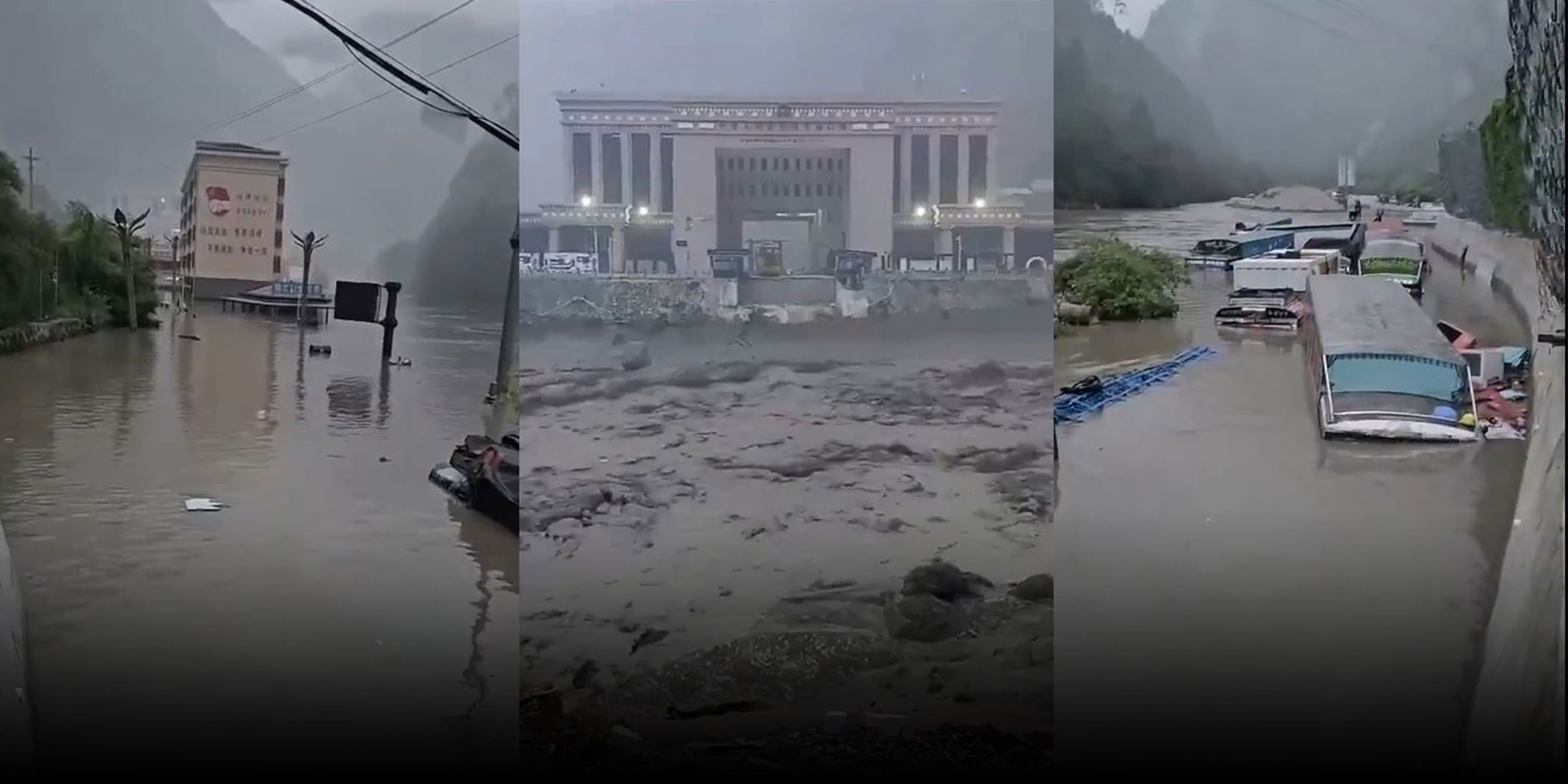
Himalayan Lake Burst Kills 9, Disrupts China-Nepal Trade Route
On July 8, a glacial lake burst near the China-Nepal border, triggering a deadly flash flood that killed nine, left 30 missing, and destroyed a key bridge vital to cross-border trade.
The incident occurred after a border river in Gyirong Township, in southwest China’s Xizang Autonomous Region, surged suddenly at around 5 a.m. Tuesday.
Among the missing, 11 were located on Chinese soil and 19 in Nepal, including six Chinese workers who were helping build local infrastructure, the Chinese Embassy in Nepal said.
Following the incident, Nepal airlifted over 150 people to safety, while more than 300 people in China had been relocated by July 9.
The flood also destroyed the Friendship Bridge, a vital trade link between China and Nepal.
Located approximately 120 kilometers north of Nepal’s capital, Kathmandu, the bridge linked Gyirong Port in China to Rasuwa Fort in Nepal. The border crossing was closed after the flood, and porters have been seen salvaging cargo from nearby damaged trucks since the incident.
The disaster is a stark reminder of escalating climate threats, experts warn, with the deadly flood most likely caused by the sudden drainage of a supraglacial lake — a body of meltwater resting atop the glacier — in Xizang, rather than the direct result of heavy rainfall.
Glacial lakes form when melting glaciers leave behind water that is dammed by ice or moraine. These loose, unstable natural dams can suddenly fail, triggering a glacial lake outburst flood, or GLOF.
Liu Qiao, a glaciologist at the Institute of Mountain Hazards and Environment, Chinese Academy of Sciences, told Sixth Tone that satellite imagery captured how supraglacial lakes on the northern slope of the Himalayas had rapidly expanded in June due to both glacial melt and sustained rainfall.
Then, in the early hours of July 8, one of the lakes collapsed. Within a short time, its surface area shrank by nearly one-fifth.
The rushing water, mixed with debris from the glacier’s surface and mountain gullies, intensified as it moved downhill, flooding the bridge and power stations.
“Such drainage of supraglacial lakes is a common seasonal hydrological process in glacial regions,” Liu said. In the past, small-scale drainages have been reported both in China and Nepal, though without disastrous consequences.
Climate change, however, is accelerating the threat. “The magnitude and damage of the flood show how climate change is leading to an increase in liquid water stored in glacial areas and disrupting natural drainage,” said Liu.
The Himalayas are warming at twice the global average, and frequent earthquakes are further destabilizing the terrain. According to an article published last year in Nature, more than 10 million people live in areas at risk of GLOF. By 2100, GLOF-related disasters in countries like India, China, Pakistan, and Nepal are projected to triple.
“Glacial lake outbursts are highly unpredictable, with limited detectable signs,” said Liu. “The flood is a warning. The risks are growing, and managing such hazards is increasingly urgent and challenging.”
Editor: Tom Arnstein.
(Header image: Screenshots show the aftermath of the glacial lake burst near the China-Nepal border, July 9, 2025. VCG)










